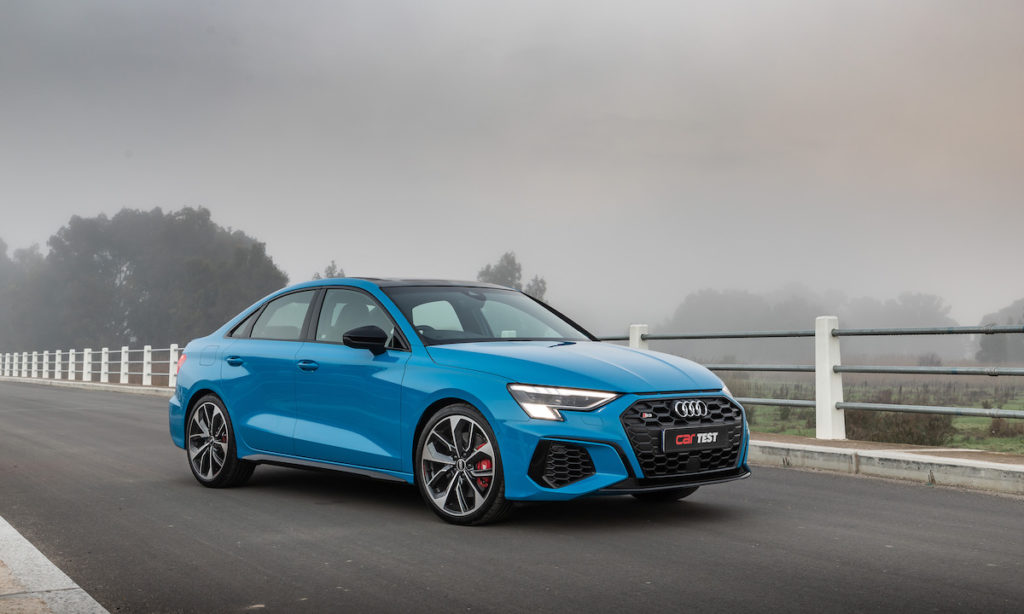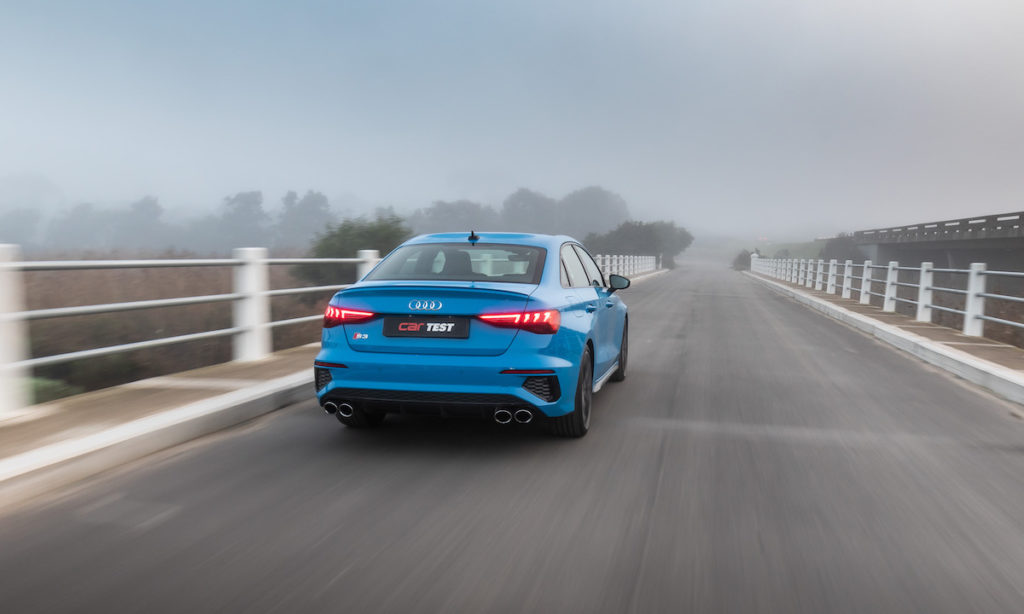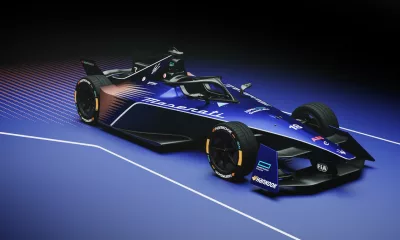The Audi S3, whether it be the Sportback or the Sedan, has maintained an appealing flexible character over the years. The turbocharged all-wheel-drive recipe has remained pretty much unchanged since the first S3 arrived in 1999 and helped define the compact-premium performance car segment we see today.
Now with added tech and sharper looks, the brand’s latest iteration of its smallest performance car aims to remain sufficiently luxurious and fast but has more dramatic styling and an up-to-date interior. Coated in Turbo Blue paintwork with the black styling package (R5 000) it’s no longer as unassuming as the car that it replaces.
Like the Sportback, the S3 Saloon takes the latest-generation Audi A3 as its foundation and adds a little more design menace. The intakes on the front bumper have grown, while the grille gets black highlights throughout the intricate honeycomb pattern, complemented by a matching splitter. The door mirror caps and extended side sills are finished in the same shade. If the S3 is specified without the optional black package, these details will be finished in the typical Audi Performance silver. Round the back, the styling changes are a bit less obvious but it does get some crisp LED taillights and the signature S quad tailpipes. The car sits on a sports suspension that drops the body 15 mm lower to the ground than the regular A3 and rides on standard 235/35/R19 wheels.
Underneath the steel body lies the traditional mechanical arrangement we’ve seen in the past. The VAG EA888 turbocharged 2,0-litre four-cylinder engine is offered with 213 kW and 400 N.m. This power figure is down from the 228 kW we saw in the outgoing model.
Directly downstream of the engine, sits the same S-tronic seven-speed dual-clutch gearbox previously offered, although it can now decouple to allow the car to freewheel when the driver lifts off the throttle in Eco mode. 
Inside the cabin, the S3 has become a thoroughly modern place to spend time and is noticeably different from before, mirroring the more outgoing personality of the exterior. The wing-backed sports seats dominate the space and are both supportive and comfortable. This specific test vehicle was fitted with the Fine Nappa Leather option (R21 000) with the embossed S logo. One of our taller testers mentioned their head brushed against the roof lining after moving through a dip in the road at speed. This is one of the negatives of most MQB-based products where the seat does not adjust low enough for taller drivers. Hot hatches and most economy-based cars often suffer this issue to some degree but just about everything in the class like the BMW M235i is better than this.
The infotainment system is a highlight and is well displayed thanks to the high-definition 10,1-inch central screen and, when combined with the full-size 12,3-inch Virtual Cockpit Plus system, all the information you need falls to your fingertips using the buttons and scroll-wheel on the steering wheel.

When it comes to practicality, the S3 sedan is simply adequate. It’s not suited for larger passengers in the back and the Sportback should offer better packing space in the boot. The rear legroom is good at 665 mm but the passenger compartment is snug for anyone over 180 cm tall as the raked C-pillar eats into headroom. The boot is a shallow square package, offering 304 litres of load space with the rear seatbacks in place and a reasonable 880 litres once everything is folded.
With 213 kW and a hearty 400 N.m sent via a well-tuned seven-speed automatic transmission that’s just as comfortable slurring through ratios in relaxed driving as it is in firing through gearshifts when pushing on. This motor propelled the Audi S3 from a standstill to 100 km/h in just 5,06 seconds on our test strip, not far off the claimed 4,90 seconds. Interestingly, the 228 kW S3 Sedan we tested in 2017 ran the same test in 4,90 seconds. The detuned engine produces a dull four-cylinder hum during regular driving and when the revs are explored in Dynamic mode, the engine note becomes louder and deeper; and, albeit a bit artificial, the engine noise is accompanied by not-so-subtle exhaust pops and bangs.

As before, the amount of torque delivered to the rear wheels is dictated by the extent to which the electronically controlled multi-plate clutch that sits between those wheels is engaged. Along with this, the dynamic control system translates the steering input and monitors data from the ESC sensors to increase the S3’s accuracy and feeling of agility. In theory, the S3’s quattro system is capable of sending the entirety of the available torque to the rear axle. Brake-based torque vectoring is also used to slow an inside wheel and quell understeer during cornering.

TEST SUMMARY
Aimed at well-earning up-and-comers looking for a luxury car experience with sporting aspirations, the Audi S3 Sedan offers plenty of style, modern features and performance for the base price. The subtle slope of the roof may eat into rear headroom but combined with the minimalist spoiler, stocky wheelarches and sleek curved waistline, this three-box design remains elegant despite being fussier than the outgoing car. The elegance continues in the cabin, where everything looks thoroughly modern with a generously sized easy-to-use touchscreen and driver’s display that add to the experience. With an impressive breadth of ability on the road, amusing exhaust theatrics and an effortless zero to 100 km/h time of 5,06 seconds, the S3 will not disappoint its target audience despite the drop of on-paper power. While we might expect much from any sedan priced from R830 000, this new Audi S3 still does the fast-everyday-car thing better than most. With the S1 now defunct, the S3 is once again the most affordable way into Audi’s fashionable S and RS ranges and gives us a clear indication of what to expect of the upcoming Volkswagen Golf R.
FAST FACTS
Model: Audi S3 Sedan TFSI quattro S tronic
Price: R830 000
0-100 km/h: 5,06 seconds
Top speed: 250 km/h
Power: 213 kW
Torque: 400 N.m
CAR fuel index: 9,36 L/100 km
Luggage capacity: 304/880 L
Service/maintenance plan: M5/100 000 km
















